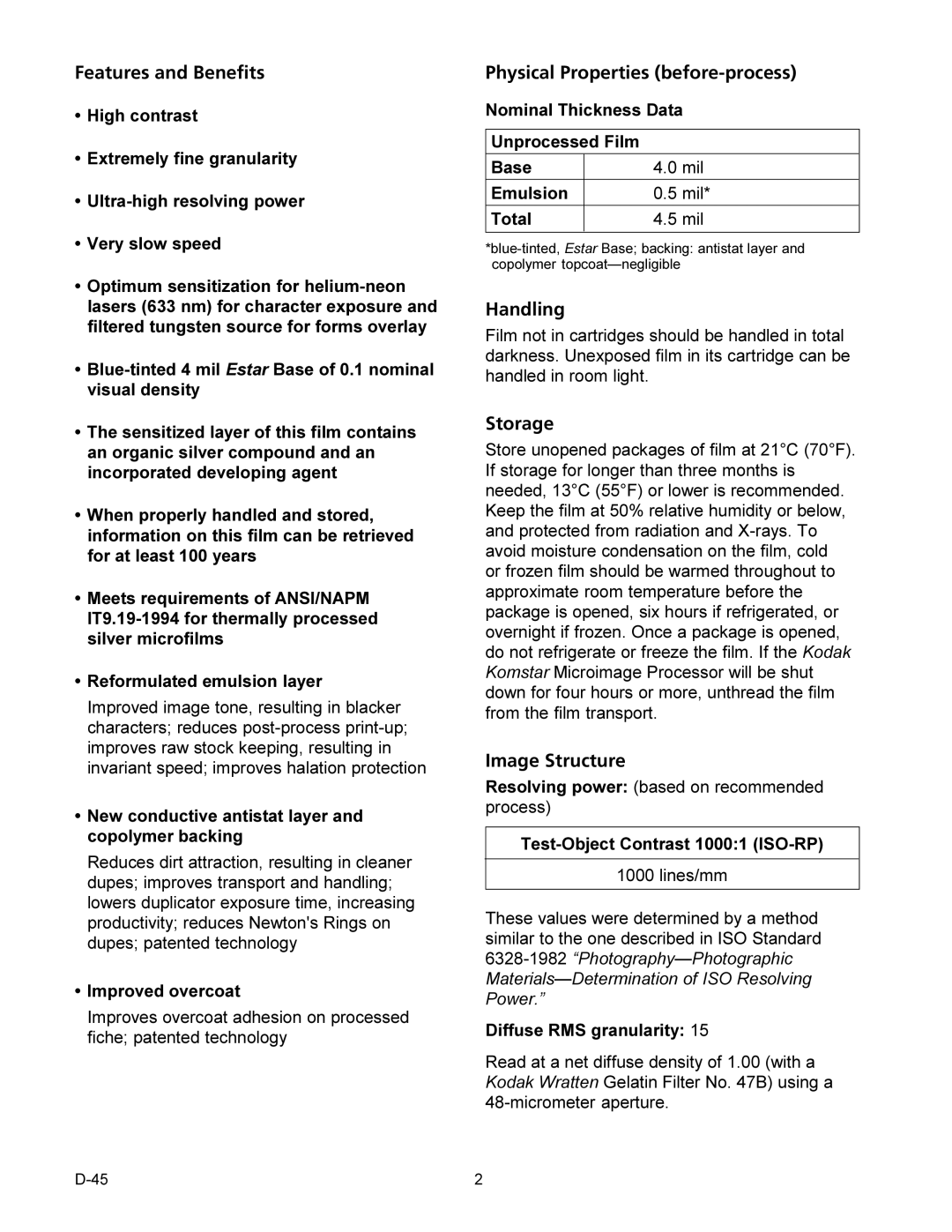
Features and Benefits
•High contrast
•Extremely fine granularity
•
•Very slow speed
•Optimum sensitization for
•
•The sensitized layer of this film contains an organic silver compound and an incorporated developing agent
•When properly handled and stored, information on this film can be retrieved for at least 100 years
•Meets requirements of ANSI/NAPM
•Reformulated emulsion layer
Improved image tone, resulting in blacker characters; reduces
•New conductive antistat layer and copolymer backing
Reduces dirt attraction, resulting in cleaner dupes; improves transport and handling; lowers duplicator exposure time, increasing productivity; reduces Newton's Rings on dupes; patented technology
•Improved overcoat
Improves overcoat adhesion on processed fiche; patented technology
Physical Properties (before-process)
Nominal Thickness Data
Unprocessed Film
Base | 4.0 mil |
Emulsion | 0.5 mil* |
|
|
Total | 4.5 mil |
|
|
Handling
Film not in cartridges should be handled in total darkness. Unexposed film in its cartridge can be handled in room light.
Storage
Store unopened packages of film at 21°C (70°F). If storage for longer than three months is needed, 13°C (55°F) or lower is recommended. Keep the film at 50% relative humidity or below, and protected from radiation and
Image Structure
Resolving power: (based on recommended process)
Test-Object Contrast 1000:1 (ISO-RP)
1000 lines/mm
These values were determined by a method similar to the one described in ISO Standard
Diffuse RMS granularity: 15
Read at a net diffuse density of 1.00 (with a Kodak Wratten Gelatin Filter No. 47B) using a
2 |
